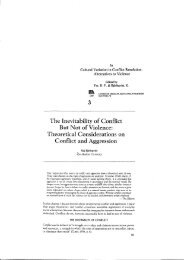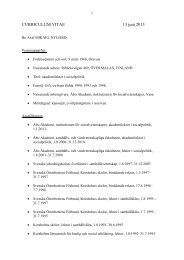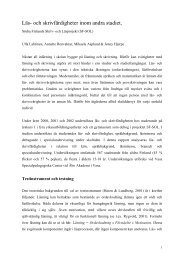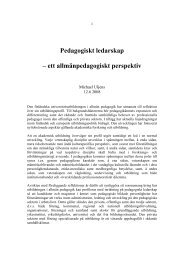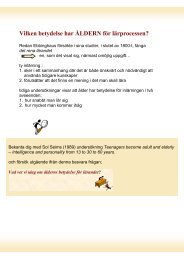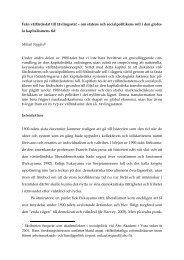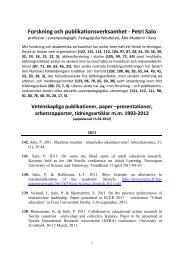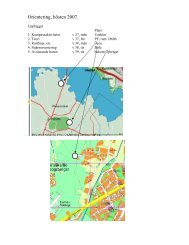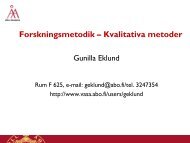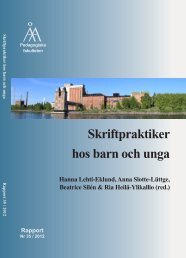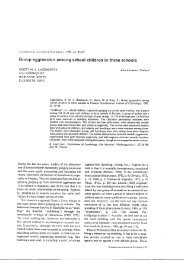Parties, Candidates and Citizens On-Line - Åbo Akademi
Parties, Candidates and Citizens On-Line - Åbo Akademi
Parties, Candidates and Citizens On-Line - Åbo Akademi
Create successful ePaper yourself
Turn your PDF publications into a flip-book with our unique Google optimized e-Paper software.
normalization are given the coding value 1, <strong>and</strong> consequently the 0-value corresponds to<br />
the conditions likelier to lead to findings of equalization.<br />
The problem with dichotomization is, as mentioned, determining when a<br />
condition is considered present (Peters 1998: 169-70). This problem is quite evident<br />
concerning the election system. This variable is classified as present (coding value 1) if the<br />
election system is considered to be mainly plurality, <strong>and</strong> not present (coding value 0) if the<br />
election system is mainly proportional. Problems arise when considering mixed systems in<br />
which elements of both plurality <strong>and</strong> proportional systems occur. In such cases, the<br />
variable is coded according to the dominant type. In some countries, such as Germany,<br />
Russia <strong>and</strong> the Ukraine, exactly 50% of the seats are selected using the plurality formula<br />
<strong>and</strong> 50% using the proportional formula (Golder 2004). In these cases, the line between<br />
plurality <strong>and</strong> proportional systems is based on how the two parallel systems interact. If the<br />
two systems exist side by side without interconnecting mechanisms, as in Russia <strong>and</strong> the<br />
Ukraine, they are coded as plurality systems 3. If the proportional system is used to correct<br />
the outcome of the plurality system, as in Germany, the general election type is<br />
considered to be proportional. This is because the proportional part has the slightly bigger<br />
influence on the outcome of the election.<br />
The second independent variable – history of democracy – is classified as not<br />
present for countries in transition or with a democratic history shorter than 15 years (cf.<br />
Norris 2004). For countries with a long history of their democratic status, the variable is<br />
classified as present.<br />
The third variable, country development in terms of both human <strong>and</strong><br />
technological development, is considered present only if both criteria are met. The<br />
country must have both high human development according to its classification in the<br />
United Nations’ human development index, <strong>and</strong> be technologically advanced at the point<br />
in time analyzed in this article. The last criterion is based on the proportion of the<br />
country’s population with Internet access. A country with over 30% of its population online<br />
4 is considered technologically advanced. As noted by Norris (2001b: 53-4), Internet<br />
usage is highly correlated to other forms of information infrastructure <strong>and</strong> can therefore<br />
be used as a summarizing measure.<br />
The fourth variable, the media environment, was earlier discussed as consisting of<br />
both an off-line <strong>and</strong> an on-line dimension. In order for the variable to be considered<br />
present, one of scenarios 2, 3 or 4, presented earlier in Figure 1 should be found. In<br />
scenario 2, both the off-line <strong>and</strong> on-line media environment is restricted. In scenario 3,<br />
the off-line media environment is unrestricted while the on-line equivalent is restricted. In<br />
determining whether the on-line environment is restricted, I have taken both government<br />
regulations <strong>and</strong> actual imposed sanctions into account. This explains why Singapore’s online<br />
environment is considered restricted while Japan’s equivalent is not. As mentioned in<br />
43



